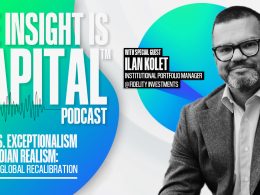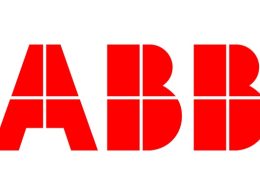On a recent latest Views from the Desk1 episode, Michelle Allen of BMO ETFs welcomed back Bipan Rai, Managing Director and Head of ETF & Structured Solutions Strategy at BMO Global Asset Management. Fresh from a vacation in Europe, Rai returned not only recharged—but with a sharper lens on the shifting global landscape.
And what is it he sees? A world that’s breaking away from the rules we’ve grown used to. Trade tensions are intensifying, capital is getting more expensive, and the post-globalization era is already here. For investors and advisors, that means portfolios need to evolve—fast.
Goodbye Globalization, Hello Fragmentation
Rai gets right to the point. “It does feel like that we’re headed into this new regime that is characterized by a more balkanized trade and capital flow environment,” he says. For decades, the global economy was driven by free trade and fluid capital. That’s changing.
Supply chains are being reshaped by geopolitics, not cost efficiency. As a result, “consumer prices will likely rise on a sustained basis,” Rai warns. This isn’t the inflation we’ve seen before—it's structural. Which means central banks may have to stay in tightening mode longer than expected.
And as productivity declines, capital becomes more expensive. Investors, Rai says, will need to be “more judicious with respect to where they invest.”
Bonds Can’t Save You Anymore. Alts Might.
In a world where inflation sticks around and capital costs climb, bonds and equities start moving more in sync. That makes traditional diversification a lot less effective.
“When there’s a greater degree of correlation between your bonds and your stocks,” Rai explains, “bonds become less effective as diversifiers.” So what now?
BMO’s Balanced Portfolio has shifted to a 60/20/20 model—still 60% equities, but now only 20% in fixed income, with the other 20% allocated to alternatives. The focus? Long-short strategies in North America, physical gold with a covered call overlay, and infrastructure.
“We continue to like exposure to infrastructure, gold and also long short strategies,” Rai says.
U.S. Bonds: The Lesser Evil
So why underweight fixed income but still lean toward U.S. bonds? Simple: supply and demand.
“Most developed markets,” Rai points out, “are spending more on infrastructure and defense without raising taxes to match.” That leads to bigger deficits—and more bond issuance.
But here’s the key difference: in the U.S., the Federal Reserve is likely to cut rates faster and deeper than markets currently expect. “That suggests that demand should be stronger for that additional issuance in the United States relative to other countries,” Rai explains.
Going Heavy on Canada (And It’s Not Just Patriotism)
Canada is taking up a bigger slice of the portfolio pie this quarter—and Rai has three clear reasons why:
- It’s earning it – “Canadian equities have actually done decently this year and have outperformed U.S. equities.”
- Policy support – “The focus for the current Liberal government is constructive for some sectors, especially industrials.”
- Relative weight – As BMO increases international exposure and reduces U.S. exposure, Canada stands out more naturally.
The International Tilt: Low Vol and EM
Two key moves stand out this quarter:
- Low Volatility International (ZLI) – “We like low vol as a factor going forward,” says Rai, citing market fragility.
- Emerging Markets (ZEM) – Especially China, which looks “a little bit more robust than it did in the past couple of quarters.”
Even though U.S. equities might rebound tactically, Rai believes the long-overdue rotation into international markets is still underway.
Yield Chasers, Be Cautious
If you’re trying to earn yield without taking on too much risk, Rai says short-duration and money market funds are still the go-to. But that might not last forever.
“With the trade backdrop potentially calming down,” he says, “we could get this terming out of that cash... and take on a little bit more duration risk relative to before.”
In other words: start thinking about life beyond the short end of the curve.
What Could Shake Things Up in Q4?
Rai outlines a few catalysts that could dramatically shift the playbook:
- Trade war flare-ups – “We have an important deadline looming in August insofar as the trade truce with China is concerned,” he warns.
- The Powell factor – There’s speculation about Trump potentially removing Fed Chair Jerome Powell. “All bets are off” if that happens, says Rai.
- Tariff ripple effects – Watch for impacts on U.S. consumer prices, jobs, and corporate profits. “We’re in uncharted territory insofar as the trade war is concerned.”
Final Take: Flexibility Is the New Alpha
The overarching message? Be nimble. Old playbooks won’t cut it. Whether it’s embracing alts, diversifying beyond North America, or hedging against policy shocks, Rai’s Q3 guidance is clear: adapt, or risk falling behind.
“In those sorts of environments,” he reminds us, “we think it’s best... for investors to look at alternative assets to function more as in the way that traditional exposure to bonds used to in terms of diversification.”
The world is changing. So should your portfolio.
Footnotes:
1 BMO ETFs. Views From the Desk. “Podcast: Guided Portfolio Strategy Q3 2025-July 15, 2025." BMO ETF Dashboard, 15 July 2025
- 1 ↩︎













